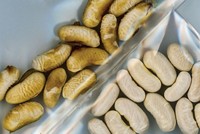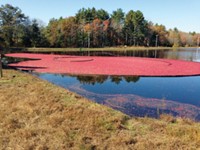Advertisement
Grab your lab coat. Let's get started
Welcome!
Welcome!
Create an account below to get 6 C&EN articles per month, receive newsletters and more - all free.
It seems this is your first time logging in online. Please enter the following information to continue.
As an ACS member you automatically get access to this site. All we need is few more details to create your reading experience.
Not you? Sign in with a different account.
Not you? Sign in with a different account.
ERROR 1
ERROR 1
ERROR 2
ERROR 2
ERROR 2
ERROR 2
ERROR 2
Password and Confirm password must match.
If you have an ACS member number, please enter it here so we can link this account to your membership. (optional)
ERROR 2
ACS values your privacy. By submitting your information, you are gaining access to C&EN and subscribing to our weekly newsletter. We use the information you provide to make your reading experience better, and we will never sell your data to third party members.
Environment
Slow-release nanofertilizer could boost crop yields
A new nanoparticle-based fertilizer delivers plant nutrients efficiently and reduces the harm of agricultural runoff
by Katharine Gammon, special to C&EN
February 23, 2017
| A version of this story appeared in
Volume 95, Issue 9
Nitrogen fertilizers used to grow crops around the globe have a problem. More than three-quarters of their nutrients get washed away before plants can absorb them, wasting money and creating environmental messes downstream. Now, researchers have developed nanoparticle fertilizers that release nutrients slowly over a week, giving crops more time to take them up (ACS Nano 2017, DOI: 10.1021/acsnano.6b07781).
Conventional slow-release fertilizers consist of urea coated in water-insoluble sulfur or polymers. Such fertilizers reduce runoff that can lead to harmful algal blooms in waterways, says Gehan Amaratunga of the University of Cambridge. But these fertilizers are expensive and haven’t been shown to increase crop yield. Amaratunga and his colleagues decided to try a new strategy: They attached nitrogen-laden urea molecules to nanoparticles of hydroxyapatite, a naturally occurring form of calcium phosphate.
In water, the urea-hydroxyapatite combination released its nitrogen payload over the course of a week, compared with pure urea, which released its nitrogen over a few minutes. When tested on rice crops in Sri Lanka, the nanofertilizer increased yields by 10%, even though it delivered only half the amount of urea compared with traditional fertilizer.
Richard Liu of Ohio State University says the nanocomposite fertilizer looks more promising than other slow-release options for increasing crop yields and reducing costs and environmental risks. He expects that it could be used in most agricultural areas around the globe and on a variety of crops, such as wheat, corn, and soybeans.





Join the conversation
Contact the reporter
Submit a Letter to the Editor for publication
Engage with us on Twitter